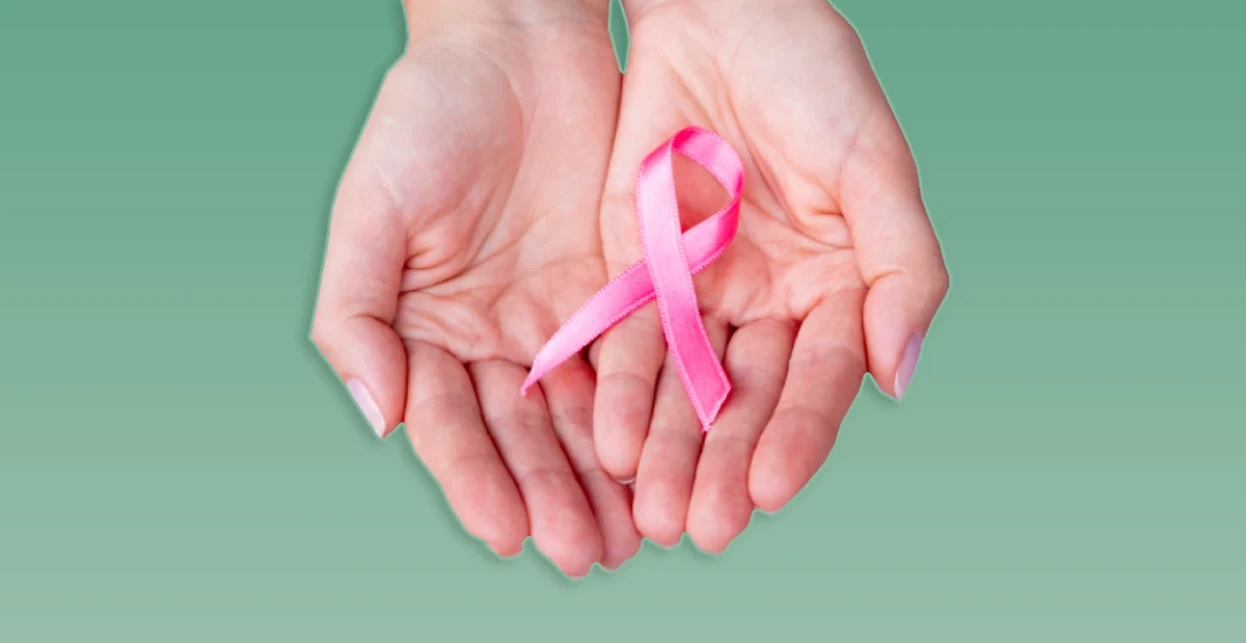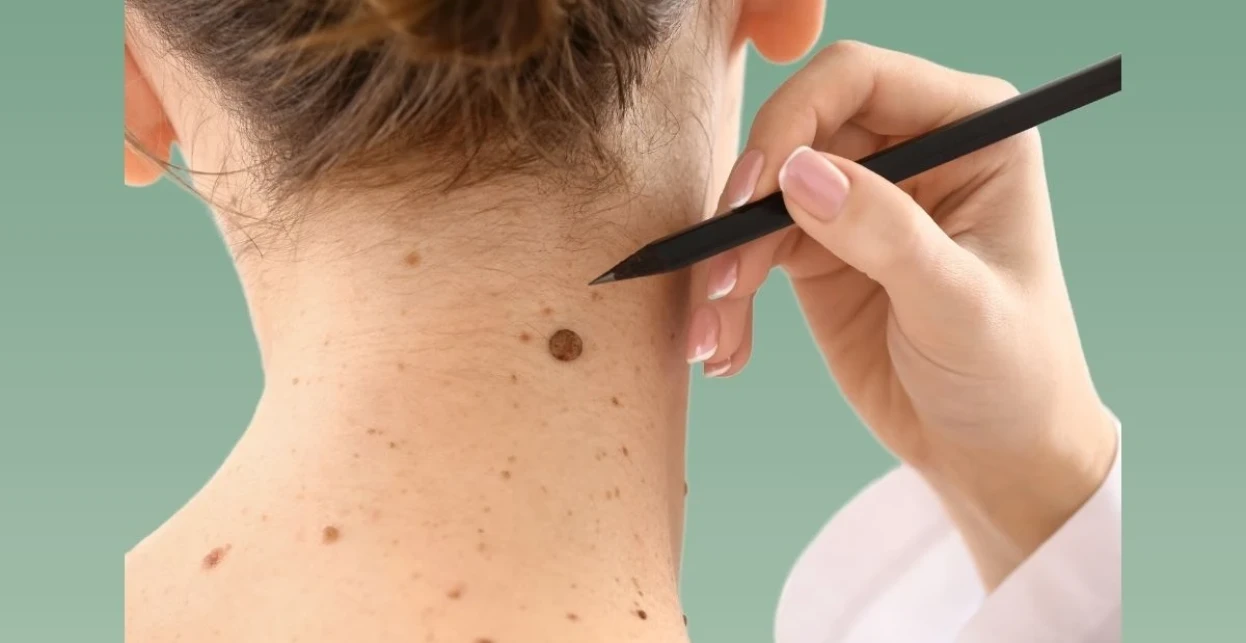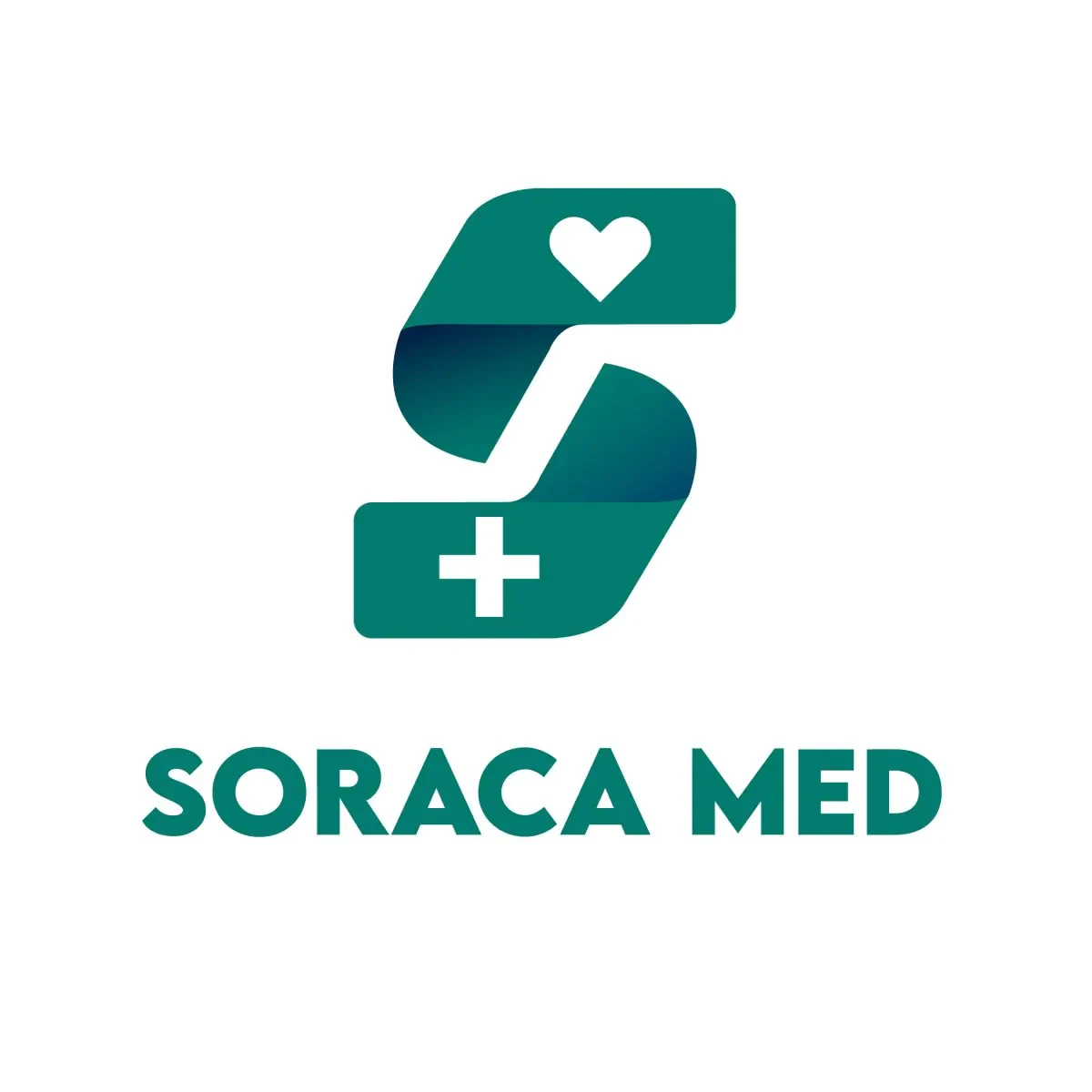Breast Cancer
The breast cancer is a form of cancer that develops with the growth of breast tissue.
Following the development of skin cancer Breast cancer ranks as the second most prevalent cancer among women across the United States. But breast cancer doesn't just happen in women. Every person is born with breast tissue, and therefore anyone can be affected by breast cancer.
Survival rates for breast cancer have increased. The number of women suffering from breast cancer is slowly going down. This is largely because of the wide public support for awareness about breast cancer and the availability of funds for research.
The advancements of breast cancer detection have allowed medical professionals to detect the cancer of breast earlier. Recognizing cancer earlier can make it more likely the cancer will be treated. Although breast cancer isn't able to be eliminated, a number of treatments are available to prolong life. Recent advances in the field of breast cancer research are helping doctors pick which treatment options are most efficient options.
Breast Cancer Symptoms
The symptoms and signs of breast cancer can include:
A lump in the breast or a an enlarged area of skin that feels distinct from the tissue surrounding it.
A nipple which appears flattened or bends to the side.
Color changes in the skin of the breast. For people who have pale skin color, skin of the breast can appear pink or red. If you have brown and Black skin the skin on the breasts could appear darker than other chest skin or appear like purple or red.
A change in the appearance, shape, or size of the breast.
The skin's appearance changes around the breast, like skin that appears to be dimpled, or appears like the skin of an orange.
Scaling, peeling, and flaking or peeling of the skin over the breast.
When is the best time to visit a doctor?
If you discover an abnormality or lump in your breast, schedule an appointment with your doctor or another healthcare professional. Don't delay until the next mammogram in order to determine what the changes you have noticed is a sign of breast cancer. Be aware of any changes that occur in your breasts even though the mammogram you had recently showed that there was no cancer in your breast.
Breast Cancer Causes
The precise cause of the majority breast cancers isn't understood. Researchers have discovered factors that can increase the risk of developing breast cancer. This includes hormones lifestyle choices, lifestyle habits and even things that happen in the environment. It's unclear what causes individuals who do not have any causes develop cancer while people with risk factors get cancer. It's possible that breast cancer is caused by an intricate interaction between your genetics and the environment surrounding you.
Healthcare professionals understand that breast cancer begins when something alters the DNA of cells in the breast. The DNA of a cell contains instructions to tell the cell what it should do. When cells are healthy, DNA provides instructions for growth and to increase at a certain speed. The instructions direct cells to die at an exact time. When cancer cells are infected, the DNA modifications provide different instructions. The mutations tell cancer cells to create more cells in a short time. Cancer cells are able to live while healthy cells would cease to exist. This can lead to a proliferation of cells.
The cancerous cells could form a mass, a tumor. The tumor could expand to infiltrate and cause damage to healthy tissues. As time passes, cancer cells may split and spread to other areas in the body. If cancer is spread in metastatic form, it's referred to as cancer.
The genetic changes that cause breast cancer usually occur in the cells which form the milk ducts. These ducts are tubes that are made to transport milk to the nupple. Cancer of the breast that develops within the ducts is known as invasive ductal cancer. Breast cancer may also start in milk glands. The glands, referred to as Lobules, are created to produce breast milk. Cancer that occurs in the lobules can be referred to as an invasive lobular cancer. Other breast cancerous cells may develop into cancerous cells however this isn't a common occurrence.
Breast Cancer Risk factors
Factors that boost the likelihood of developing breast cancer are:
The family's past history with breast cancer. If a parent or sibling had breast cancer, the risk of getting breast cancer increases. This is especially true when your family members have an history of having breast cancer in a young age. It is also more likely in the event that you have several family members who have breast cancer. However, the majority of people who are diagnosed as having breast cancer do not have an ancestral cancer history.
A personal story for breast cancer. If you've had cancer in one breast, you're at an increased chance of developing cancer in the second breast.
A personal history of breast problems. Certain breast conditions are indicators for a greater chance of developing breast cancer. These include lobular carcinoma in situ, commonly referred to as LCIS as well as hyperplasia atypical of the breast. If you've undergone a breast biopsy that revealed one of these diseases that you are at risk, you're at a higher risk of developing breast cancer.
The time to start your period is an earlier time. Beginning your period prior to age 12 can increase your chances of contracting breast cancer.
Menopausal menopausal transitions begin as you get older. Beginning menopause after age 55 can increase the risk of breast cancer.
The female gender is a big factor. Women are much more likely than men to contract breast cancer. Every woman is born with breast tissue. Therefore, any woman can be diagnosed with breast cancer.
The breast is a dense tissue. Breast tissue is composed of fatty tissues and dense. Dense tissue is comprised from milk glands ducts and fibrous tissues. If your breasts are a bit dense it means that you have the most dense of tissues than the fatty tissues that line your breasts. A breast that is dense could make it difficult to detect breast cancer using the mammogram. If your mammogram shows that your breasts are a bit crowded and your risk of getting breast cancer is higher. Discuss with your healthcare provider regarding other tests you could be able to undergo as well as mammograms to check for breast cancer.
Alcohol consumption. Drinking alcohol increases the risk of developing breast cancer.
Your first child is born at a younger time. Giving birth to your first child after 30 can increase the possibility of breast cancer.
Not having ever had a baby. Having been pregnant at least once lowers the risk of developing breast cancer. Being pregnant is not a guarantee of the chance of developing.
Growing older. The risk of breast cancer increases as you age.
DNA mutations that are passed down through generations that can increase the risk of developing cancer. Certain DNA changes which increase the likelihood of breast cancer could be passed on from parents to their children. The most well-known mutations are known as BRCA1 or BRCA2. These mutations can dramatically increase the risk of breast cancer as well as other cancers However, not everyone who has these genetic mutations will be diagnosed with cancer.
The treatment for menopausal hormones. Taking certain hormone therapy drugs to manage the effects of menopausal can boost the likelihood of developing breast cancer. The risk is related to hormone therapy drugs which combine progesterone and estrogen. The risk diminishes once the use of these drugs.
Obesity. People with obesity are at a higher risk of developing breast cancer.
Exposure to radiation. If you received radiation treatments for your chest when you were a young adulthood, the risk of breast cancer is greater.
Prevention
You can take steps to reduce the chance of getting breast cancer
Prevention
You can take steps to reduce the risk of developing breast cancer
Making small adjustments to your routine can help lower the risk of getting breast cancer. Do your best to:
Ask questions about screening for breast cancer. Talk with your doctor or any other health expert about the best time to start screening for breast cancer. Find out about the benefits and dangers of screening. Together, you'll be able to determine which screening tests for breast cancer best for you.
Be acquainted with your breasts by taking a the breast self-exam to raise awareness about breasts. You may choose to learn more about your breasts through periodic inspections of them in a self-exam for breasts to increase awareness of breasts. If you notice a appearance, lump or something that is not normal in your breasts, make sure you report it to a medical professional immediately.
Breast awareness doesn't protect you from breast cancer. However, it can help you to understand the appearance as well as feel of your breasts. This can increase the likelihood that you'll be able to tell if something is changing.
Alcohol consumption should be moderate or at least. Limit the amount of alcohol you consume to a maximum of one drink per day, in the event that you decide to drink. To prevent breast cancer there isn't a limit to the amount of alcohol that is safe. If you're extremely concerned about your risk of developing breast cancer then you can decide to stay clear of alcohol.
Work out every day during the workweek. Aim for at minimum 30 minutes of physical activity throughout the week. If you've been inactive lately, consult a medical specialist if you're okay. Then begin slowly.
Menopausal hormone therapy should be avoided. Combination hormone therapy can raise the chance of developing breast cancer. Consult a medical professional regarding the benefits and potential risks from hormone therapy.
Certain people experience symptoms of menopausal change that create discomfort. They may decide that the risks associated with hormone therapy are reasonable for relief. To decrease the chance of developing breast cancer, choose the lowest amount of hormone therapy that is feasible in the shortest time.
Maintain the weight you are at. If your weight is healthy, try to maintain it. If you are looking to shed weight, talk to a health expert for suggestions on healthy ways to reduce your weight. Reduce your intake of calories and gradually increase your exercising.
Treatments and operations for women at who are at a high risk of developing breast cancer
If you are at a high chance of getting breast cancer, you may want to look at other ways to reduce the chance. It is possible that you have a high chance of getting breast cancer if there is an ancestral history of breast cancer. The risk is higher if there is the history of precancerous tumors within the breast tissue. Discuss the risk to your healthcare team. Your healthcare team may offer options to reduce your risk like:
Preventive medicine. Using estrogen-blocking medicines reduces the risk of developing breast cancer among those at an increased risk. The options include medications known as selective estrogen receptor modifiers as well as aromatase inhibitors. These medications are also utilized as a hormone therapy treatment for breast cancer.
The medicines are prone to a number of adverse side negative effects. This is why they're not recommended for those with a high risk of developing breast cancer. Discuss the advantages and risks with your medical team.
Surgery to prevent cancer. If you have the highest risk of developing breast cancer, then you should contemplate having surgery to decrease the risk of getting breast cancer. One option is to remove breasts, known as prophylactic mastectomy. Another option is in order to eliminate the ovaries. This is also known as prophylactic or Oophorectomy. The procedure lowers the chance of developing breast cancer as well as ovarian cancer.
Frequently Ask Questions
Breast cancer is a popular expression for cancerous (malignant) tumor that develops in the cells which line the ducts and/or lobules of breast. Breast cancer isn't a single cancer, but rather multiple diseases that act differently.
The causes of breast cancer are not completely well-defined. Research has identified a variety of risk factors that increase the risk of female breast cancer, which include hormonal as well as lifestyle and environmental factors that can increase the chance of breast cancer. Other factors are:
- Increasing age
- A personal history of breast cancer
- Menstrual cycle that begins before menstruation
- Late menopause
- The first pregnancy following age 30 or without prior pregnancies
- Utilization of oral contraceptives
- Breast cancer in the family history
- The presence of certain genetic mutations
- The history of radiation therapy for the chest
- Long-term use of a combination hormonal therapy
- Alcohol use
- Obesity following menopausal
It isn't clear why certain people with no risk factors for cancer develop it but those with risk factors do not.
A rare condition, inflammatory breast cancer (IBC) typically forms in the soft tissues, obstructing lymph vessels that run through the skin of the breast. This is why the breast is tender, firm red, itchy and warm, due to the increased flow of blood and the build-up of lymphocytes. IBC is distinct from other types of cancer in the breast, particularly in the signs, prognosis and treatment.
The phrase "inflammatory" is not meant to indicate what's happening within the breast, but in the way that the breast appears. If an injury or infection results in the breasts be inflamed, they can be tender red, swollen and itchy, however the root cause isn't inflammation.
Yes, it is possible for men to develop breast cancer. Anyone who has breast tissue has the potential being diagnosed with breast cancer. However, it's much less prevalent as one in 100 instances of breast cancer in the United States developing in men as per the Centers for Disease Control and Prevention.
The male form of breast cancer is usually the type of cancer known as the invasive cancer of the ducts (IDC) which starts within an artery in the breast. It then can spread to other areas in the breast.
The American Cancer Society (ACS) offers the following early detection screenings for women who are at a moderate risk of developing breast cancer:
Options for mammograms starting around age 40.
Mammograms every year for women aged 45-54
Mammograms every 2 years for women aged 55 and over, unless they opt to keep their annual screenings
MRIs and mammograms are recommended for women who are at a high risk of developing breast cancer
The ACS also suggests women to be aware of the advantages and potential risks associated with breast cancer screening and also how their breasts typically appear and feel. They should also inform them of the changes they notice to their physician promptly.
Patients who suspect they be suffering from breast cancer should speak with their primary doctor or an OB/GYN. There are a variety of doctors who could be involved in the treatment of breast cancer. The following is a listing of doctors that could be involved in the treatment of breast cancer:
Medical Oncologist A doctor who is trained in the diagnosis and treatment of cancer with hormone therapy, chemotherapy and targeted therapy
Surgical Oncologist is a doctor who utilizes surgical procedures to identify, treat and stage cancer and manage specific cancer-related symptoms and can conduct biopsies or other surgical procedures, such as the removal of the cancerous breast or the breast in its entirety
Radiation Oncologist A doctor who has been specially trained in treating cancer by using the radiation treatment to reduce tumors and eliminate cancerous cells.
There are many people who experience breast cancer in the same manner. Patients may not experience any discomfort or changes the body. However it is possible that she will feel a new lump or a mass within the breast region that is the most typical sign for breast cancer. Certain lumps are tough and don't cause pain but others could be uncomfortable. (Keep the fact in your mind there are many breast lumps and lumps are cancerous.) Certain people might experience discomfort or swelling in the armpit or the breasts, or may feel tenderness in the breast or the nipple.
While breast cancer may be painful, it does not necessarily cause discomfort. The patient might experience discomfort and/or pain in their breasts or nipples, however the symptoms are usually due to other health issues and even the menstrual cycle. The sudden pain can also be related to benign breast issues including mastitis and cysts.
Every woman should check and feel her breasts frequently, noticing any changes in the way they look or feel. If an area close to the breasts remains in pain or is unusual, visit a doctor for help.
Treatment Types

Breast Cancer
Early detection saves lives. Schedule your mammogram today. Breast cancer is the most common cancer among women. Early detection is key to successful treatment. That's why it's important to get regular mammograms, especially if you're at high risk. Schedule your mammogram today and take the first step in protecting your health.


